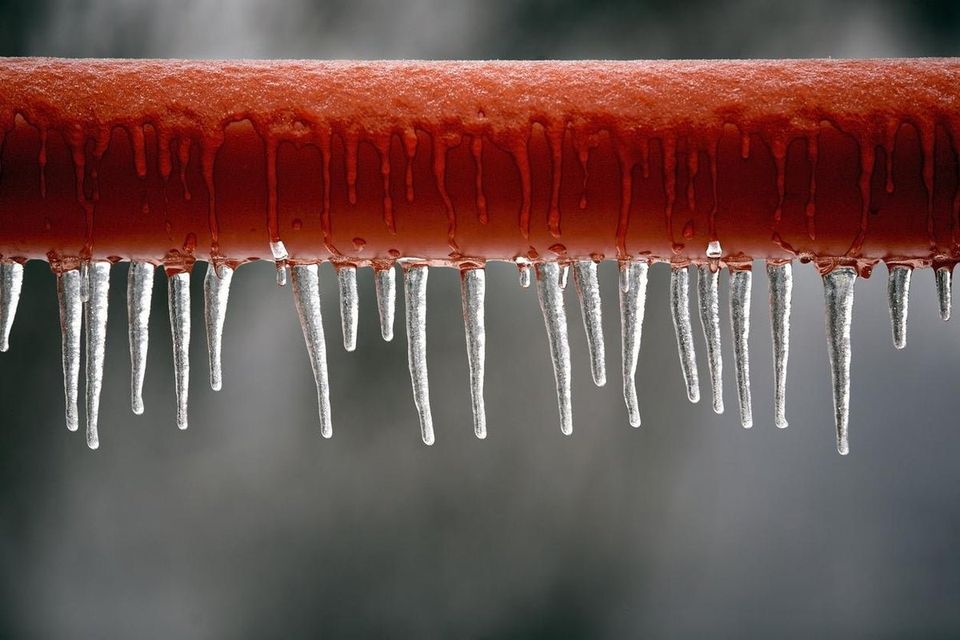Crucial Advice to Prevent Frozen Plumbing in Winter: Specialist Guidance
Crucial Advice to Prevent Frozen Plumbing in Winter: Specialist Guidance
Blog Article
The article down the page on the subject of How To Avoid Freezing Pipes is seriously fascinating. You should investigate for yourself.

Winter can ruin your pipes, especially by freezing pipelines. Right here's exactly how to avoid it from occurring and what to do if it does.
Introduction
As temperatures drop, the threat of icy pipes increases, possibly bring about expensive repair work and water damages. Recognizing just how to prevent frozen pipes is vital for property owners in cool climates.
Recognizing Icy Pipes
What causes pipes to freeze?
Pipes freeze when exposed to temperatures below 32 ° F (0 ° C) for expanded durations. As water inside the pipelines ices up, it broadens, putting pressure on the pipe wall surfaces and possibly triggering them to burst.
Risks and problems
Frozen pipes can lead to water supply disturbances, building damages, and expensive repairs. Ruptured pipes can flooding homes and cause considerable structural damages.
Indications of Frozen Pipes
Determining icy pipes early can stop them from bursting.
Just how to identify frozen pipelines
Look for reduced water circulation from faucets, uncommon smells or noises from pipes, and noticeable frost on revealed pipes.
Prevention Tips
Protecting at risk pipes
Wrap pipes in insulation sleeves or utilize warmth tape to shield them from freezing temperatures. Focus on pipes in unheated or exterior areas of the home.
Heating methods
Keep interior areas appropriately warmed, especially locations with pipes. Open up cabinet doors to allow cozy air to flow around pipes under sinks.
Shielding Exterior Pipes
Garden hose pipes and outdoor taps
Detach and drain pipes garden hose pipes prior to winter months. Install frost-proof faucets or cover outside taps with insulated caps.
What to Do If Your Pipes Freeze
Immediate activities to take
If you suspect icy pipes, keep faucets available to eliminate stress as the ice thaws. Utilize a hairdryer or towels soaked in hot water to thaw pipes slowly.
Long-Term Solutions
Architectural changes
Take into consideration rerouting pipelines away from exterior wall surfaces or unheated locations. Add extra insulation to attics, cellars, and crawl spaces.
Upgrading insulation
Invest in top notch insulation for pipelines, attics, and wall surfaces. Appropriate insulation helps keep constant temperature levels and decreases the threat of frozen pipelines.
Verdict
Stopping icy pipes calls for positive measures and fast responses. By comprehending the reasons, indications, and preventive measures, house owners can protect their plumbing during cold weather.
HOW DO PIPES FREEZE?
As temperatures drop, water begins to freeze, and water pipes are particularly vulnerable to freezing. But a frozen pipe is more than an inconvenience. Water pipes that freeze are at risk of rupturing, leading to serious leaks and flooding.
When water freezes, it expands. The expanding tendency explains why you have to be careful with what you put in a freezer — some objects, such as soda cans, will explode if left in a freezing environment for too long. The same principle applies to water pipes. If the water inside freezes, it expands, putting the whole system at risk of rupture. However, the pipe rarely bursts where ice has formed — instead, freezing portions of the pipe force pressure “downstream,” between the faucet and the ice blockage. This is where the pipe bursts — usually, in places without any ice at all.
Wind chill plays a significant role in freezing pipes, too. If unheated spaces have holes, cracks or openings that allow cold, outside air to blow in, the cooling effect often accelerates ice formation. Even small openings can allow a dangerous amount of cold air into a structure, like the small holes that let telephone, cable, internet or television lines enter a room.
It’s not just northern regions that experience frozen pipes, either. Water systems in southern climates are at an even higher risk of frozen or ruptured pipes — often, in warm climates, homes aren’t designed with freezing temperatures in mind, and homeowners aren’t familiar with winterizing techniques. When a cold snap occurs, many warm-weather structures are unprepared, leading to ice blockages, burst pipes and flooded homes.
Pipes located in unheated interior spaces are especially prone to ice blockage, including garages, attics and basements — in fact, up to 37 percent of all frozen pipe failures occur in basements. Even pipe systems that thread through cabinets or exterior walls can freeze under the right conditions.
WHAT TO DO IF YOUR PIPES FREEZE
Frosty pipes: If a section of your piping system is exposed, check to see if any frost has developed on the surface. If it has, there is a good chance your pipe is frozen. Unusual smells: Strange and odorous smells coming up from a drain or faucet could indicate a frozen pipe. If your pipes are blocked by ice, the smells have nowhere to escape except back in the direction of your home. No water: One of the most obvious signs that a pipe has frozen is a lack of running water. If you turn on a faucet and nothing or only a small trickle of water comes out, this probably indicates that the pipe has an ice block. INSULATE PIPES
Pipe insulation is often remarkably inexpensive, and it is a small investment compared to the repair costs of a burst water pipe. When insulating your water system, pay particular attention to pipes in unheated, interior spaces of your home, such as in your attic, garage or basement.
The most common kinds of pipe insulation are made from fiberglass, polyethylene or foam. If a cold weather is headed your way and you need emergency insulation, you can use duct tape and wadded up newspaper for a temporary solution.
KEEP GARAGE DOORS CLOSED
One way to keep your pipes from freezing is to keep garage doors closed. This one is especially important if water supply lines go through the garage — most often, garages feature high amounts of smooth concrete, which keep the space cold. The space is cold enough without letting in more freezing air, which will drop the overall temperature of the garage. A garage door accidentally left open leaves any water supply lines vulnerable to freezing temperatures, which is a disaster waiting to happen.
OPEN CABINETS
Periodically, open your bathroom and kitchen cabinets to keep warm air circulating around the plumbing. The heated air will help prevent ice blockages and pressure buildups in the pipes. If you are expecting a particularly cold night, opening up your cabinets before you go to bed can help keep your pipes clear and warm despite the freezing temperatures.
If you have small children or curious pets in your home, make sure to remove all household chemicals or toxic cleaners from the cabinets before leaving them open.
LET FAUCETS DRIP
You don’t have to turn on all the faucets in your home. First, determine which ones are fed by exposed piping. Once you’ve narrowed it down, leave these few faucets on during especially bitter weather. Running water, even a small trickle, carries more internal energy than standing water. Because of the friction created by the constant movement, moving water produces a small amount of heat and is harder to freeze than standing. By just leaving a few faucets running, the movement will help prevent ice blockages from forming in your plumbing.
Even more than the small amount of friction and heat produced by moving water, a running faucet relieves pressure build up in cold pipes. This helps to keep your pipes from bursting, even if the water inside freezes. If both hot and cold water lines are exposed, leave both slightly running to make sure pressure doesn’t build up in one and not the other.
KEEP THE THERMOSTAT CONSISTENT
One of the best ways to prevent ice blockages is to keep your thermostat set to the same temperature during the day and the night. While many homeowners tend to lower their thermostats during the evening to save money on their heating bill, the strategy may ultimately backfire — a burst pipe costs much more than a slightly higher bill.
Instead, try to keep your thermostat settings as consistent as possible during the day and the night. Since steady temperatures will help keep your pipes free of ice, avoid any sudden changes in the environment of your home.
LEAVE THE HEAT ON
If you plan on leaving your home during the winter, make sure you leave your heat on while you’re away.
Turning on your heat for an empty house may seem counterintuitive. But while a lower temperature may reduce your heating bill, it could mean disaster if a cold temperatures hit, and your pipes freeze and burst.
This doesn’t mean you have to keep your house as warm as normal — any temperature 55 degrees or higher is appropriate to keep your pipes safe.

Do you enjoy reading up on 6 Ways to Prevent Frozen Pipes? Write feedback down the page. We would be glad to see your feelings about this write up. We are looking forward to see you back again in the future. Enjoyed our post? Please quickly share it. Help someone else discover it. I praise you for being here. Come back soon.
Click Here Report this page